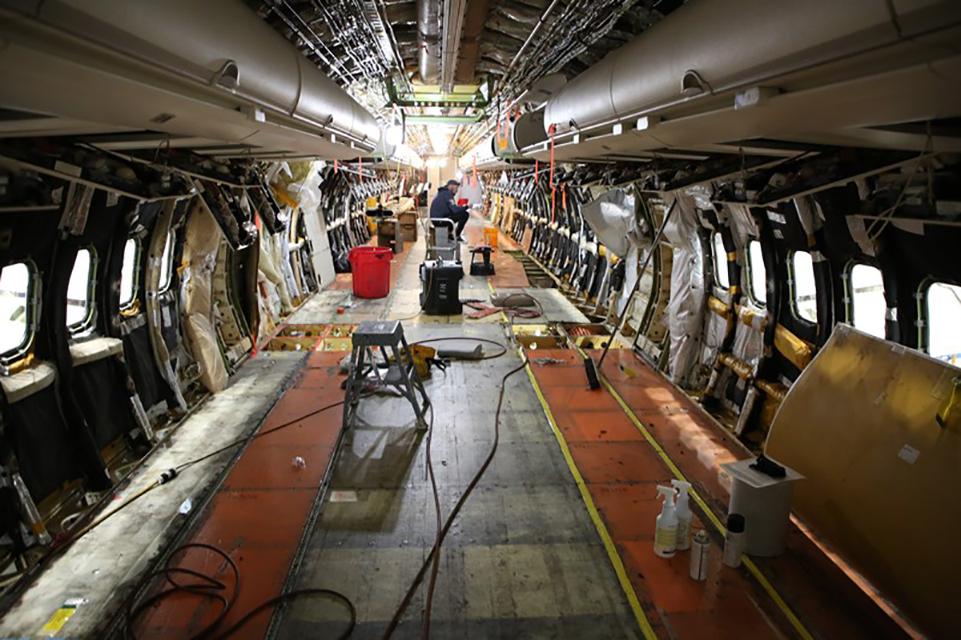
The commercial aftermarket could see a 50% decline in year-over-year sales during the 2020 second quarter before beginning what will likely be a long, slow recovery following the coronavirus pandemic, a new Canaccord Genuity report said.
Following a “slight decline” in first quarter (Q1) sales, business has plummeted as airlines have grounded aircraft and are pushing off as much maintenance as possible. MRO providers surveyed by Canaccord are projecting a 35% decline over the next two quarters in parts purchasing and sales combined, with a bigger decline in Q2. The second half of the year should see sequential improvement, but year-over-year figures will still show a 25% decline. Add in the strong first quarter and disastrous second quarter and full-year figures will likely come out to a 25% year-over-year dip, the survey figures showed.
“We continue to view component OEMs as likely the first to see a major impact, followed by engine and heavy MROs,” Canaccord’s Ken Herbert wrote in an analysis based in part on survey results from more than 50 aftermarket-service providers. “However, we believe component MROs will be the first to see a recovery, then followed shortly by other segments, with the modification market the last to recover.”
The recovery’s pace and shape will be driven by global airline activity. Aviation Week’s Fleet Data Services shows that the percentage of inactive large transport jet aircraft in global scheduled and non-scheduled passenger fleets had reached 55% by April 18. This figure does not include nearly 3,000 aircraft—about 10% of the fleet—that are neither parked nor in regular service. Rather, they are conducting a few cycles per week, in many cases serving as spares supporting busier aircraft operating pared-down schedules. These “parked/reserve” aircraft, which Aviation Week has begun tracking during the pandemic-induced groundings, underscore the uncertainty that airlines have. With little idea how quickly traffic will rebound, airlines want to keep at least some aircraft on standby, rather than putting them in storage. The parked/reserve fleet is a partial reflection of this strategy, as airlines keep multiple airframes in service but use them much less frequently than they would in a normal-demand environment.
Such usage changes combined with uncertainty over how quickly traffic will recover makes projecting the aftermarket’s recovery particularly challenging. Canaccord’s assumptions include global traffic recovering to 90% of pre-COVID-19 outbreak levels by the end of 2021, “but this is difficult to predict,” Herbert said.
Canaccord sees airline fleets getting smaller and newer. Even if airlines ramp back up to 95% of pre-pandemic capacity by 2022, they will have to shed 3,200 mainline aircraft in 2020-21, Herbert said. This assumes a combined 35% reduction in new aircraft deliveries out of Airbus and Boeing. If the ramp-up reaches 90% of pre-pandemic capacity by 2022, airlines would need to remove 4,400 mainline aircraft.
While many of them will likely be old and near value-less on the part-out market, some will be young enough to support remaining fleets. This will create headwinds for new-parts suppliers and should lower prices for some used serviceable material.
“If it is largely the older aircraft that are retired, that would in fact limit the applicability of used parts to current-generation aircraft,” Herbert said. “However, we do expect to see a number of relatively newer aircraft also retired (such as the A380s and relatively newer A320s) that will shift the supply-demand balance in used parts.”





